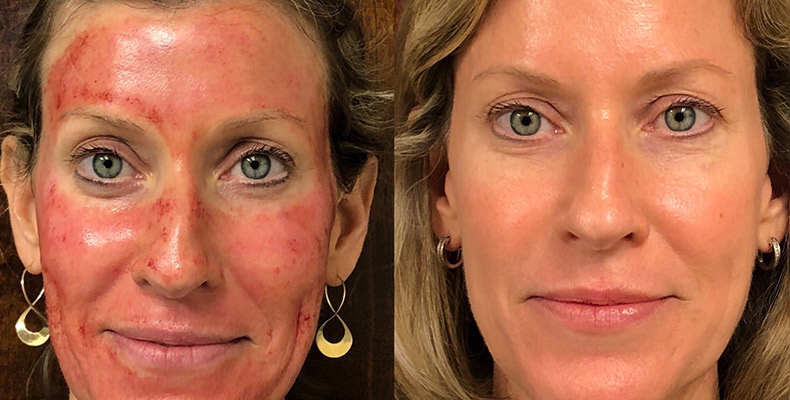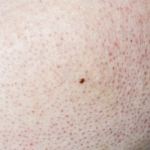Many factors affect the condition of your skin as a whole. However, hormones have one of the largest. Hormonal skin issues can rapidly alter the overall condition of your skin before you’ve even realized it. That much is true for both men and women.
Here, our board-certified dermatology specialists will examine why hormonal skin changes happen and how pregnancy, menopause and even periods can influence hormone levels and skin health.
Why do hormonal skin issues happen?
It’s not that every hormone has an effect. Instead, a group of three hormones all have a considerable impact on hormonal skin changes. These hormones include progesterone, estrogen and testosterone.
Each of them plays an essential but different role.
● Progesterone stimulates the creation of sebum or the oil glands within the skin. (Sebum is the oily or waxy substance produced by the body’s sebaceous glands. It’s responsible for moisturizing and protecting your skin.)
● Estrogen stimulates collagen, elastin and hyaluronic acid that can help your skin remain plump and firm.
● Lastly, testosterone works in a similar way to progesterone by activating the sebaceous glands to produce oil. Testosterone typically presents during menstruation.
That is the simplest way to view the three. From this, you can see how they have a significant effect on the build-up of oil in your glands–which can often lead to a major breakout, oily skin or even dry skin.
How your period, pregnancy and menopause can affect your skin
Your period
Too few people understand that your entire skin’s appearance can be altered based on where you are within your menstrual cycle as a whole. That alteration is mainly due to the high and low points that estrogen will reach during the period. That alteration could change the texture or even thickness of your skin.
Within the first few days of a female cycle, you’ll notice your skin becoming drier and perhaps duller than before. This is due to a decrease in the three hormones that we mentioned above.
Research has also shown many women experience a certain degree of sensitivity to their skin during this time. Later on, around the seven-day mark, you may experience your lively skin returning due to an increase in estrogen levels.
Around 14 days, your estrogen levels will be at their peak, and your skin will most likely look its best, almost as if you’re glowing. Then at the 20-day mark, estrogen levels will be lowered again and subbed for progesterone, causing the build-up of oil and potential breakouts.
Finally, at the end of your cycle, testosterone will take over, which can lead to period breakouts that we all know too well.
Pregnancy
Your body has no shortage of changes during pregnancy; just one of those is what your skin experiences. Your body produces high amounts of both progesterone and estrogen during pregnancy.
The high amounts of hormones are believed to be responsible for melasma in many women, which is a condition that affects up to 70 percent of women. It is characterized by dark brown skin paths that usually appear on the nose, upper lips or cheeks.
When the condition appears during pregnancy, it’s called chloasma or the “pregnancy mask”. The chloasma patches will usually fade with time or when your hormones are balanced once again. Hormonal acne is also common during pregnancy.
READ: A Guide to Pregnancy Acne
Menopause
As we mentioned before, estrogen is responsible for collagen production, which gives your skin that firm, plump feeling. However, during menopause, levels of estrogen are lowered, leading to a decrease in collagen production. That results in your skin experiencing volume loss, increased wrinkles and even facial sagging.
Issues hormones can cause for everyone
Hormones are powerful. As such, they can create a whole host of issues for any man or woman. The main issue that a lot of people face as a result of hormonal changes is acne.
Acne’s main hormonal cause is testosterone, which is responsible for oil production–running the risk of becoming trapped within the pores. Men often face testosterone changes and thus will experience some skin problems, typically during puberty.
Yet, women who are towards the end of their menstrual cycle, when estrogen is low, can also experience the same problems.
Dermatology for hormonal skin
If you’re experiencing hormonal skin issues, a dermatologist is your best chance for a lasting solution. The dermatology experts at Columbia Skin Clinic can help provide treatment options and recommend a skin care routine to help combat any hormonal imbalance. Our providers also treat a wide range of skin conditions. Making an appointment is easy with our online scheduling, so make an appointment today!







